Further reading
- Peter K. Knoefel (1991). "Abati's work on the amazing nature of the viper and its miraculous powers". Toxicon. 29 (3): 301–309. doi:10.1016/0041-0101(91)90283-W. PMID 2048145.
Baldo Angelo Abati (in Latin Baldus Angelus Abatius; born in Gubbio) was an Italian physician and naturalist. He lived in the second half of the sixteenth century.
Baldo Angelo Abati’s De natura et de Vipera admirabili mirificis facultatibus eiusdem liber (published in 1589 in Urbino), was one of the first books about snakes. It was dedicated to Francesco Maria II della Rovere, the sixth duke of Urbino. A second edition appeared in 1591 in Urbino and a third in Nuremberg in 1603. The latter edition was reprinted twice prior to 1660. Five of the 32 book chapters deal with the effects and medical uses of venom. In Chapter 14 Abati, who had dissected a rattlesnake, enumerated the edible parts of the snake and provided information about various methods for preparing of snake meat.
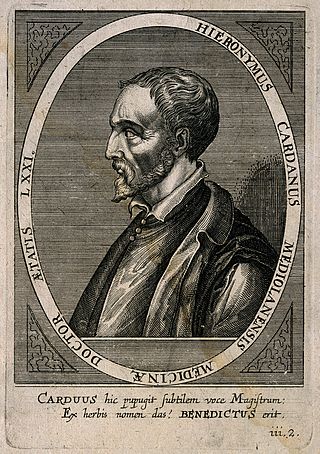
Gerolamo Cardano was an Italian polymath, whose interests and proficiencies ranged through those of mathematician, physician, biologist, physicist, chemist, astrologer, astronomer, philosopher, writer, and gambler. He was one of the most influential mathematicians of the Renaissance, and was one of the key figures in the foundation of probability and the earliest introducer of the binomial coefficients and the binomial theorem in the Western world. He wrote more than 200 works on science.
Andrea Gabrieli was an Italian composer and organist of the late Renaissance. The uncle of the somewhat more famous Giovanni Gabrieli, he was the first internationally renowned member of the Venetian School of composers, and was extremely influential in spreading the Venetian style in Italy as well as in Germany.
The 1711 Sales Auction Catalogue of the Library of Sir Thomas Browne highlights the erudition of the physician, philosopher and encyclopedist, Sir Thomas Browne (1605-1682). It also illustrates the proliferation, distribution and availability of books printed throughout 17th century Europe which were purchased by the intelligentsia, aristocracy, priestly, physician or educated merchant-class.
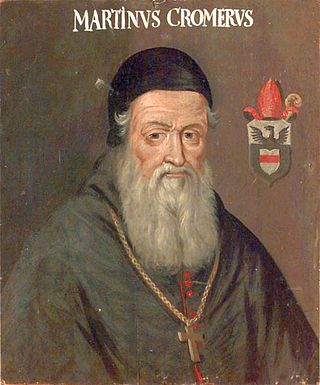
Marcin Kromer was Prince-Bishop of Warmia (Ermland), a Polish cartographer, diplomat and historian in the Kingdom of Poland and later in the Polish–Lithuanian Commonwealth. He was a personal secretary to two Kings of Poland, Sigismund I the Old and Sigismund II Augustus.

Melanophryniscus is a genus of toads in the family Bufonidae. They are found in northern half of Argentina, southern Bolivia, southern Brazil, Paraguay, and Uruguay. Common name South American redbelly toads has been coined for them.
Antonio Abati was an Italian baroque poet.

GiacomoZabarella was an Italian Aristotelian philosopher and logician.

Adam Tanner was an Austrian Jesuit theologian.

Jordanus de Nemore, also known as Jordanus Nemorarius and Giordano of Nemi, was a thirteenth-century European mathematician and scientist. The literal translation of Jordanus de Nemore would indicate that he was an Italian. He wrote treatises on at least 6 different important mathematical subjects: the science of weights; “algorismi” treatises on practical arithmetic; pure arithmetic; algebra; geometry; and stereographic projection. Most of these treatises exist in several versions or reworkings from the Middle Ages. We know nothing about him personally, other than the approximate date of his work.
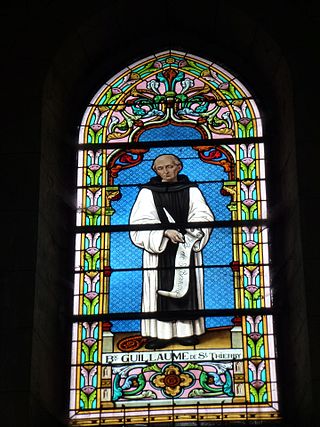
William of Saint-Thierry, O. Cist was a twelfth-century Benedictine, theologian and mystic from Liège who became abbot of Saint-Thierry in France, and later joined the Cistercian Order.
The diocese of Cagli e Pergola was a Roman Catholic ecclesiastical territory in the Marche, central Italy, in the province of Pesaro and Urbino. Up until 1563 it was under the direct supervision of the Roman pontiff. In that year, the diocese of Urbino was elevated to metropolitan status, and Cagli became a suffragan see of Urbino. The diocese was abolished as an independent entity in 1986, when it was incorporated into the diocese of Fano-Fossombrone-Cagli-Pergola. It was still a suffragan of the archdiocese of Urbino.
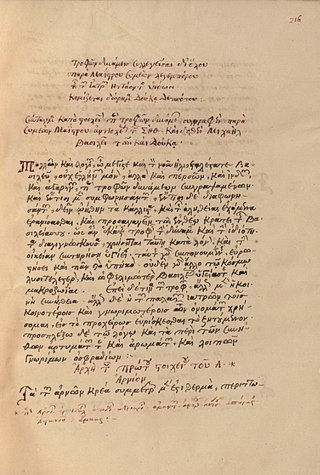
Symeon Seth was a Byzantine scientist, translator and official under Emperor Michael VII Doukas. He is often said to have been Jewish, but there is no evidence of this. He wrote four original works in Greek and translated one from Arabic.
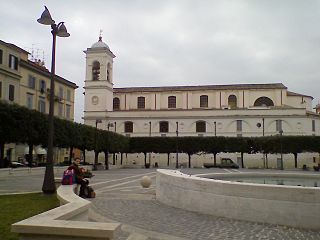
The Diocese of Albano is a suburbicarian see of the Roman Catholic Church in a diocese in Italy, comprising seven towns in the Province of Rome. Albano Laziale is situated some 15 kilometers from Rome, on the Appian Way.

Charles de Bovelles was a French mathematician and philosopher, and canon of Noyon. His Géométrie en françoys (1511) was the first scientific work to be printed in French.
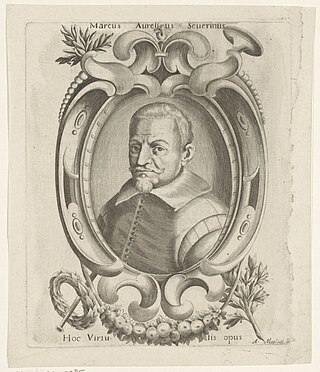
Marco Aurelio Severino was an Italian surgeon and anatomist.

The Archdiocese of Urbino–Urbania–Sant'Angelo in Vado is a Latin Church ecclesiastical territory or archdiocese of the Catholic Church in the Province of Pesaro and Urbino in the Marche region of central Italy. The current archbishop is Giovanni Tani, appointed in June 2011. It was previously a metropolitan see.
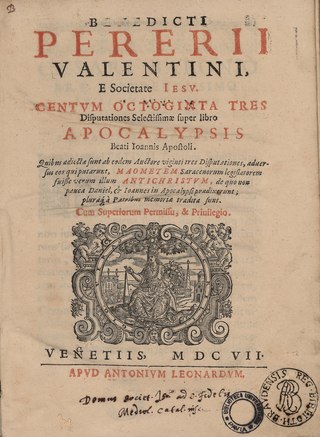
Benedict Pereira was a Spanish Jesuit philosopher, theologian, and exegete.
The Galenic corpus is the collection of writings of Galen, a prominent Greek physician, surgeon and philosopher in the Roman Empire during the second century CE. Several of the works were written between 165–175 CE.
The year 1589 in science and technology included a number of events, some of which are listed here.

De natura rerum is a thirteenth century work of natural history, written by Flemish Roman Catholic friar and medieval writer. Thomas of Cantimpré. De natura rerum may be Thomas' most significant work, as it's both the one he dedicated more time to and the one that had the largest posthumous fortune, as witnessed by the large number of codes that contain this work, but also by the many authors that took inspiration from it.